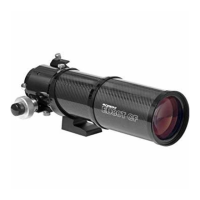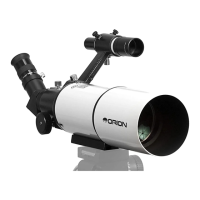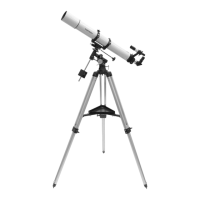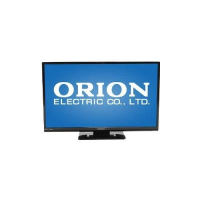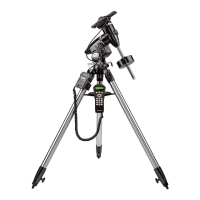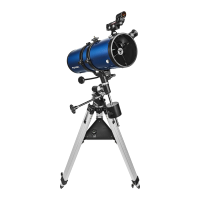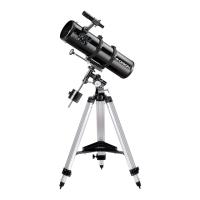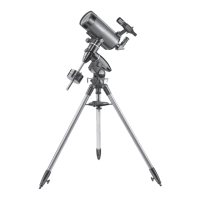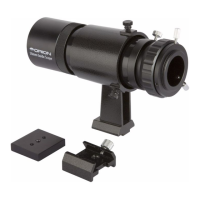9
To nd Polaris in the sky, look north and locate the pattern of
the Big Dipper (Figure 15). The two stars at the end of the
“bowl” of the Big Dipper point approximately to Polaris.
Observers in the Southern Hemisphere aren’t so fortunate to
have a bright star so near the south celestial pole (SCP). The
star Sigma Octantis lies about 1° from the SCP, but it is barely
visible with the naked eye (magnitude 5.5).
To polar align the CT80’s equatorial mount:
1. Roughly level the equatorial mount by adjusting the length
of the three tripod legs as needed.
2. Loosen the latitude lock bolt located on the front of the
mount (see Figure 7). Turn the latitude adjustment bolt (on
the opposite side of the mount) until the pointer on the
latitude scale is indicating the latitude of your observing
location. If you don’t know your latitude, you can look it up
on the internet. For example, if your latitude is 35° North,
set the pointer to 35. Then lightly retighten the latitude lock
bolt. The latitude setting should not have to be adjusted
again unless you move to a different viewing location
some distance away.
3. Loosen the Dec. lock knob and rotate the telescope optical
tube until it is parallel with the R.A. axis, as it is in Figure
2. The pointer on the Dec. setting circle should read 90°.
Retighten the Dec. lock knob.
4. Loosen the azimuth lock knob at the base of the equatorial
mount (Figure 7) and rotate the mount so the R.A. axis
points roughly at Polaris. If you cannot see Polaris directly
from your observing site, consult a compass and rotate the
mount so the telescope points North. Retighten the azi-
muth lock knob.
NOTE: You can do the polar alignment with the telescope
attached to the equatorial mount.
The equatorial mount is now polar aligned. From this point
on in your observing session, you should not make any
further adjustments to the azimuth or the latitude of the
mount, nor should you move the tripod. Doing so will render
the polar alignment inaccurate. The telescope should be moved
only about its R.A. and Dec. axes.
Using the R.A. and Dec. Slow-Motion Control
Cables
The R.A. and Dec. slow-motion control cables allow fine
adjustment of the telescope’s position to center objects within
the eld of view. Before using the cables, manually “slew” the
mount to point the telescope in the vicinity of the desired tar-
get. Do this by loosening the R.A. and Dec. lock knobs (Figure
7) and moving the telescope about the mount’s R.A. and Dec.
axes. Once the telescope is pointed somewhere close to the
object to be viewed, retighten the mount’s R.A. and Dec. lock
knobs.
The object should now be visible somewhere in the eld of
view of the red dot nder scope. If it isn’t, use the slow-motion
controls to scan the surrounding area of sky. Note: when
using the slow motion cables, the R.A. and Dec lock
knobs should be tightened, not loose. When the object
is visible in the nder scope, use the slow-motion controls to
center the red dot on it. Now, look in the telescope’s eyepiece
and use the slow-motion controls to center it in the eyepiece.
The Dec. slow-motion control cable can move the telescope a
maximum of 25° or so. This is because the Dec. slow-motion
mechanism has a limited range of mechanical travel. (The
Figure 14. To balance the telescope on the mount, you rst
A) balance it on the R.A. axis, then B) on the Declination axis.
R.A. lock
knob
Dec. lock
knob
Big Dipper
(in Ursa Major)
Little Dipper
(in Ursa Minor)
Cassiopeia
N.C.P.
Pointer
Stars
Polaris
Figure 15. To nd Polaris in the night sky, look north and nd
the Big Dipper. Extend an imaginary line from the two "Pointer
Stars" in the bowl of the Big Dipper. Go about ve times the
distance between those stars and you'll reach Polaris, which lies
within 1° of the north celestial pole (NCP).

